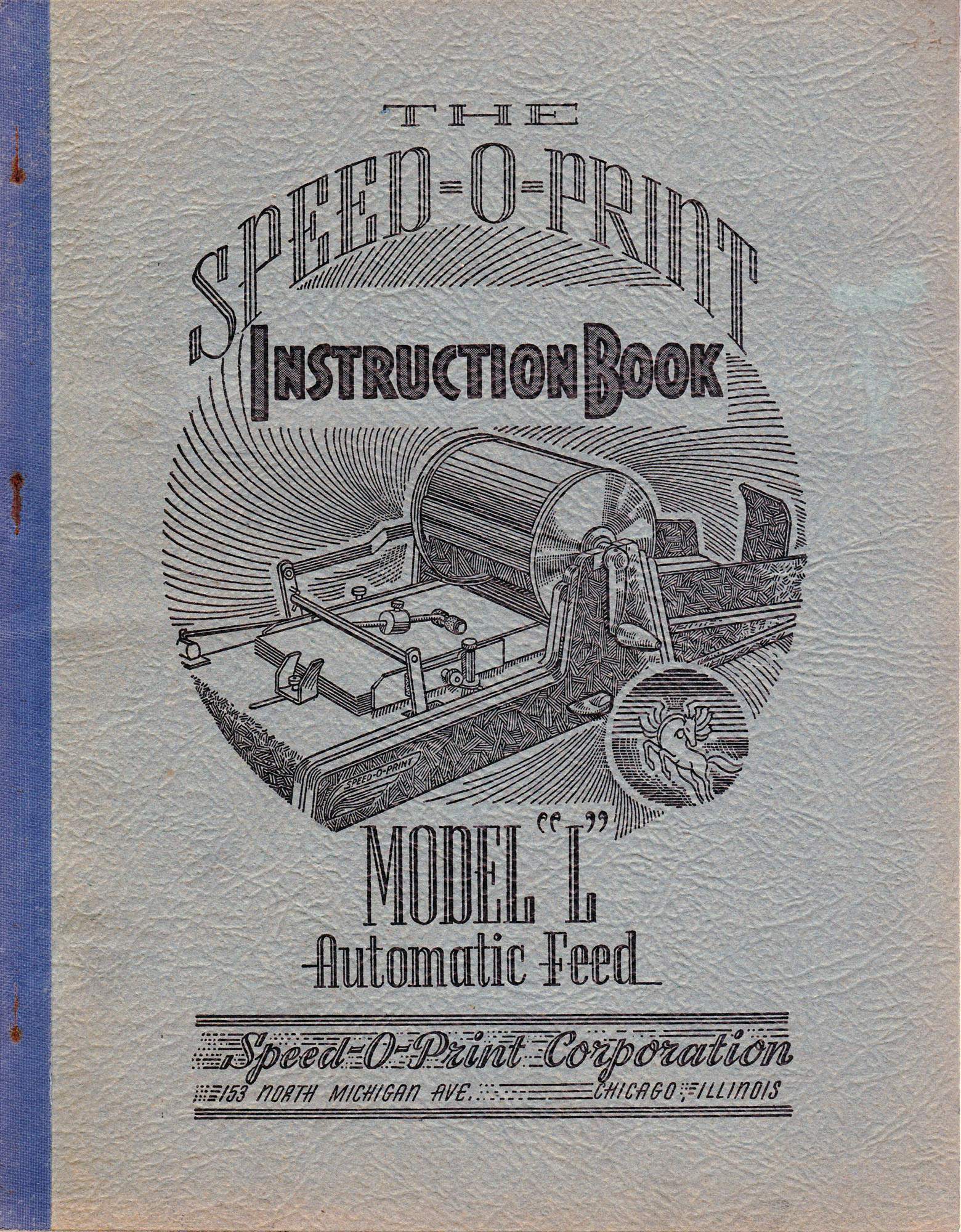
From the recent haul of Parts & Service manuals sent by David B., I found this 1950’s-era The Speed-O-Print Model L Automatic Feed Instruction Manual. Not only is it a quick reference for using an old Spirit Duplicator, it also is wonderfully illustrated in a style that strongly reminds me of Peter Aschwanden‘s work in John Muir’s “How to Keep Your Volkswagen Alive”. I *love* this manual despite the unlikelihood of me ever finding a working Speed-O-Print duplicator to actually use…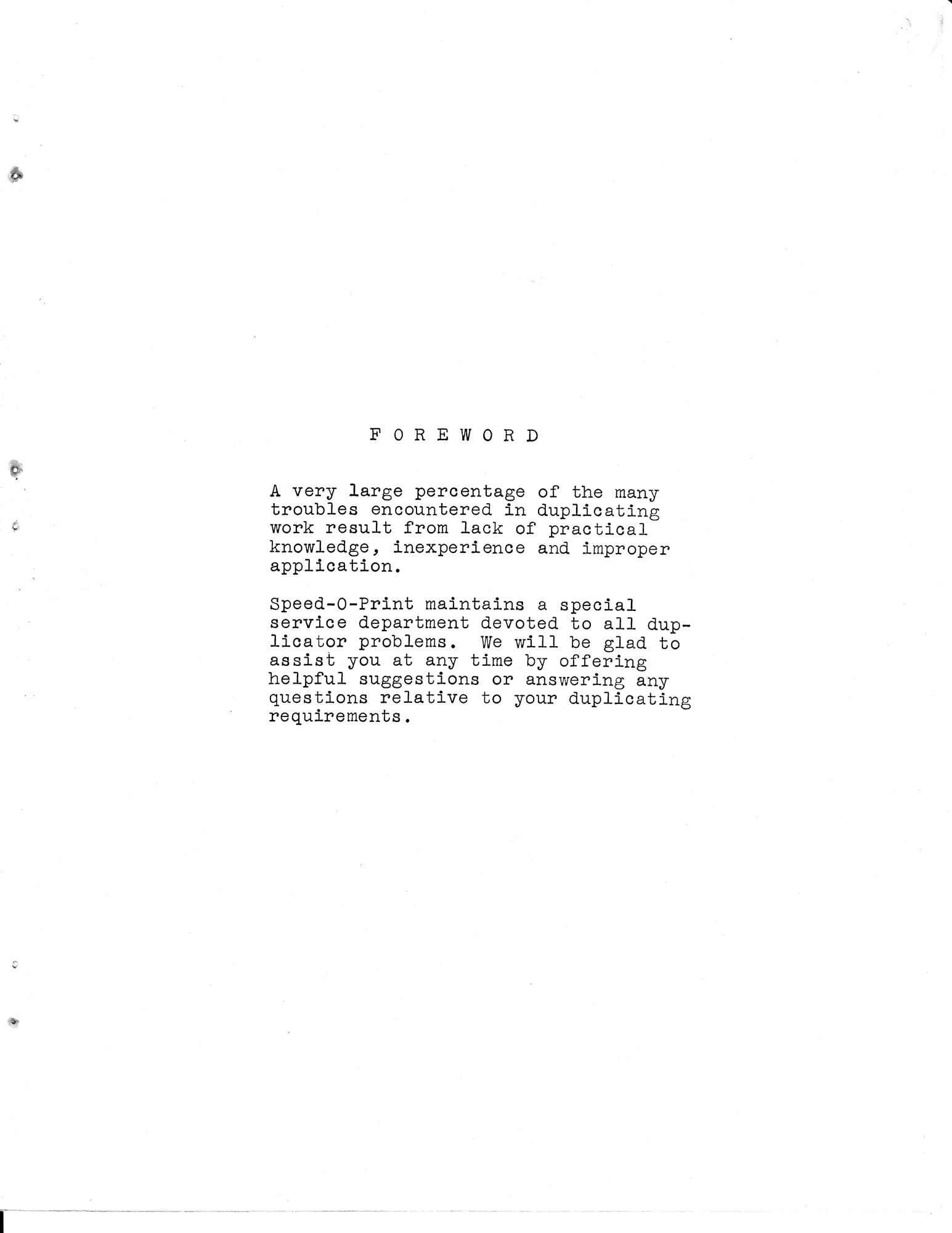

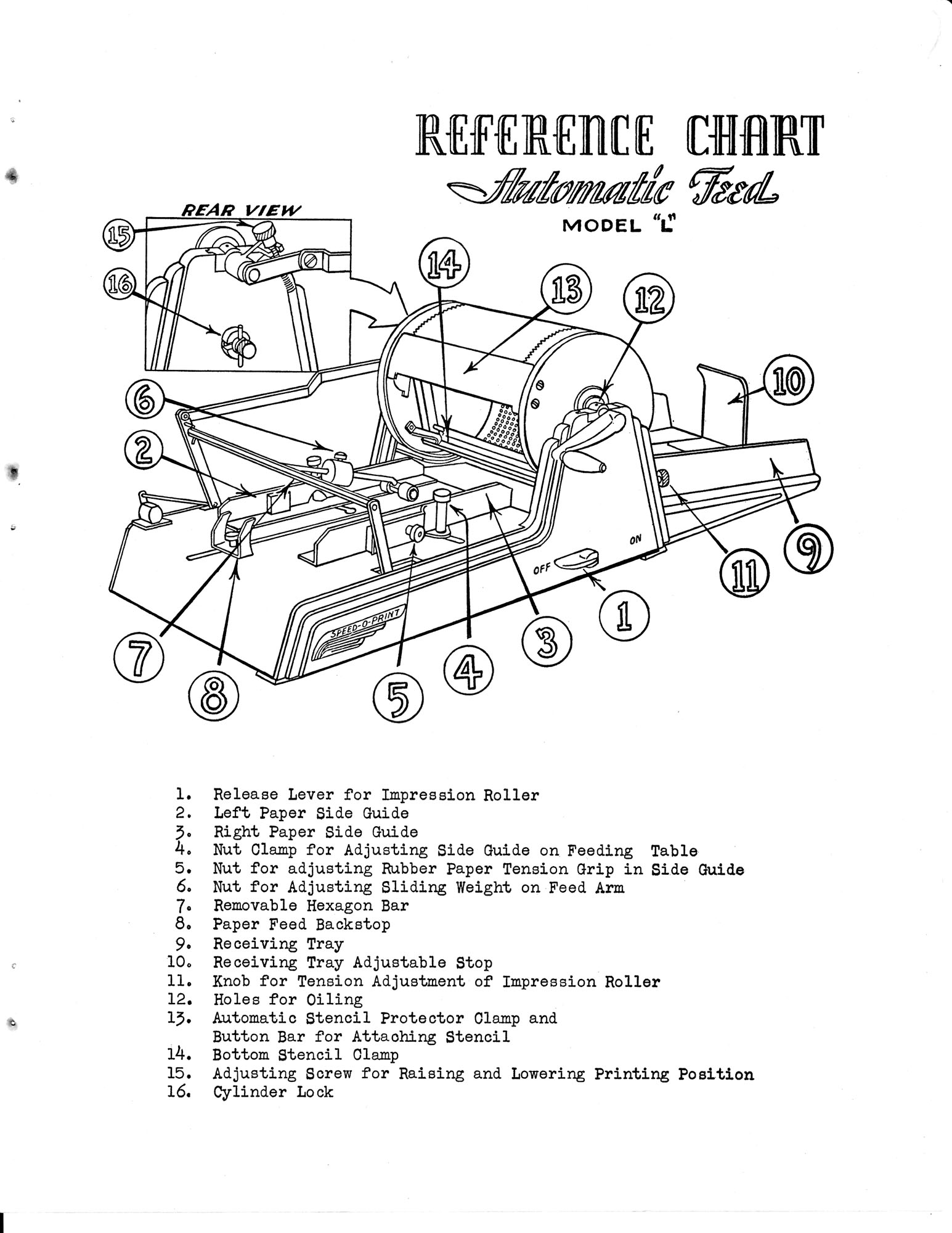
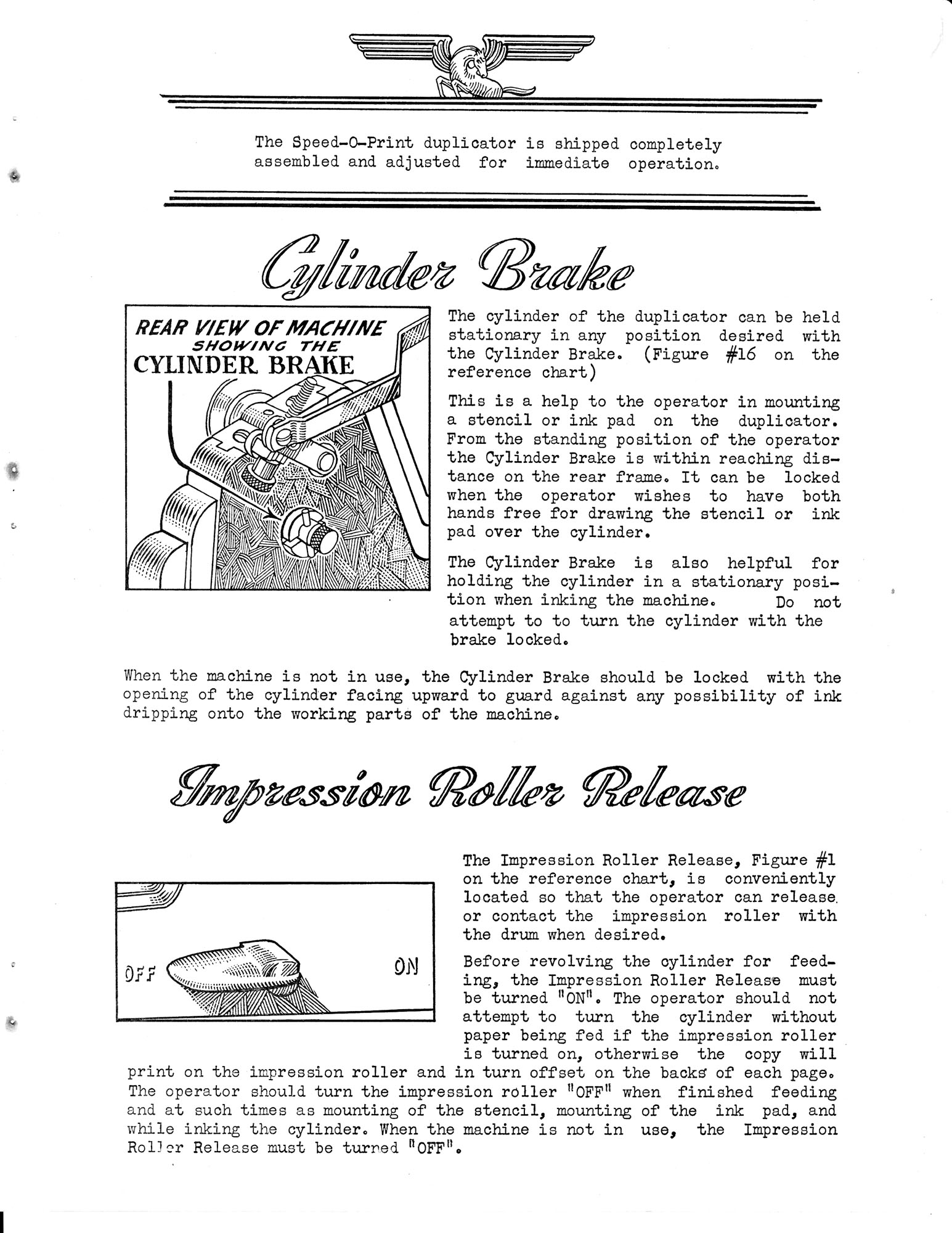
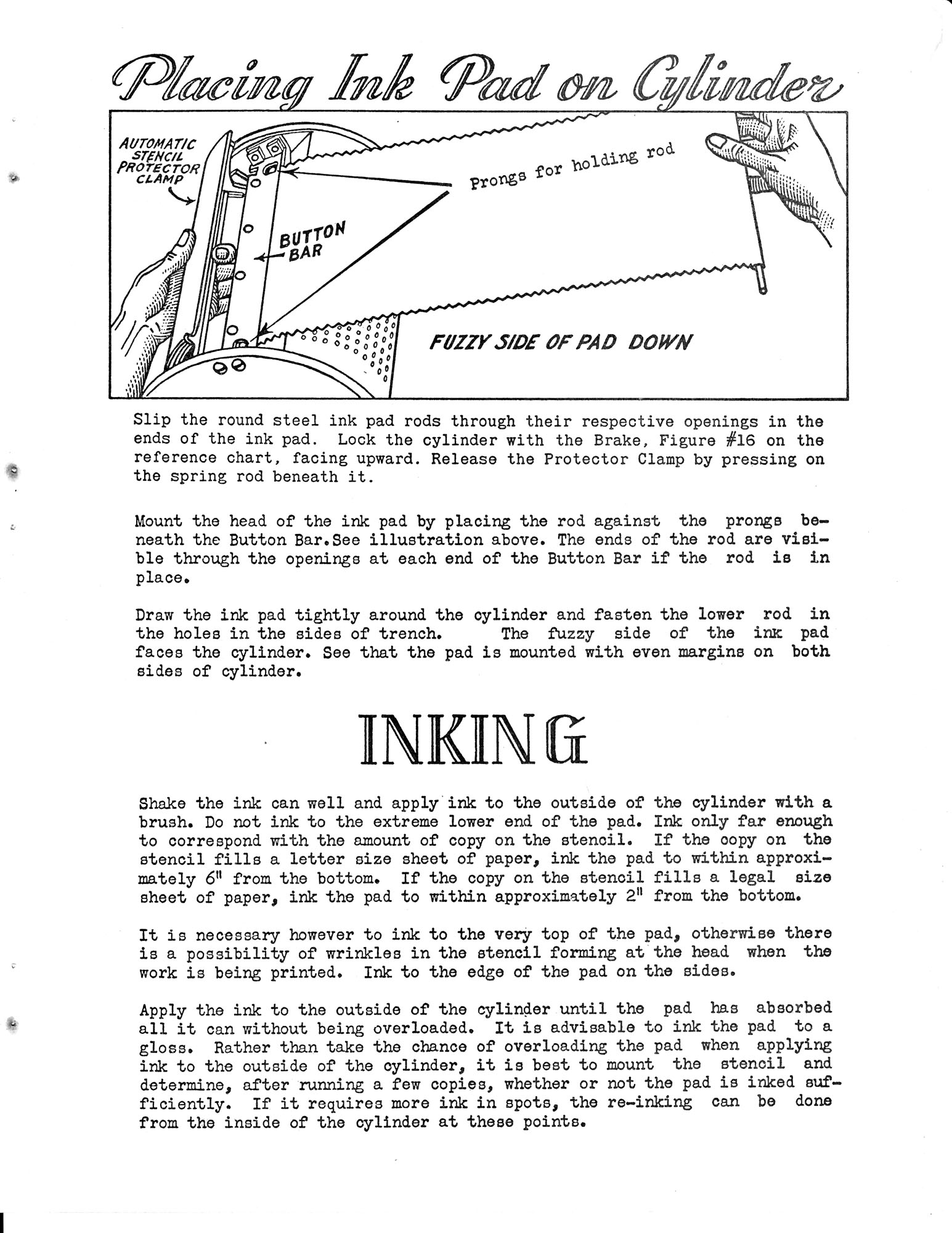
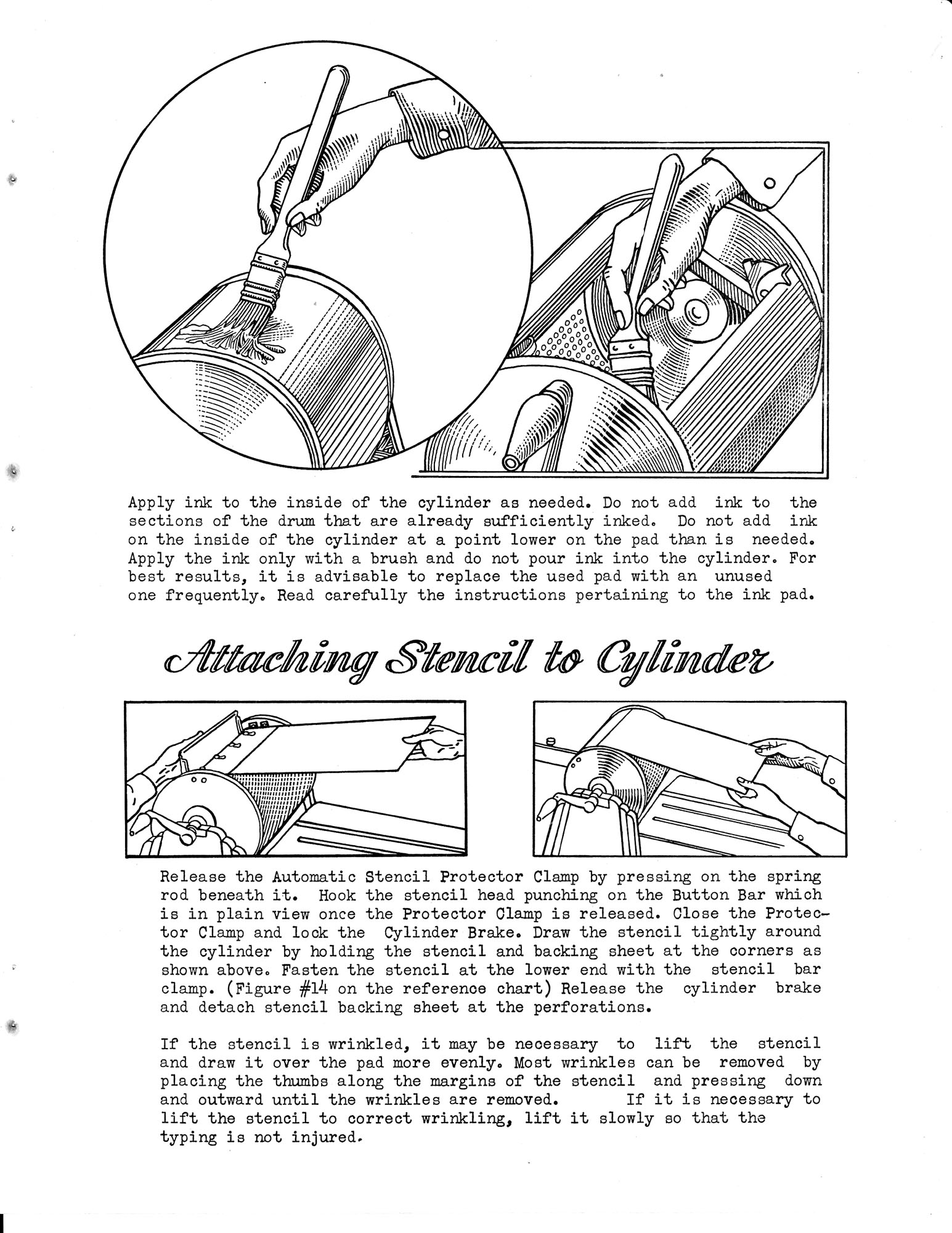
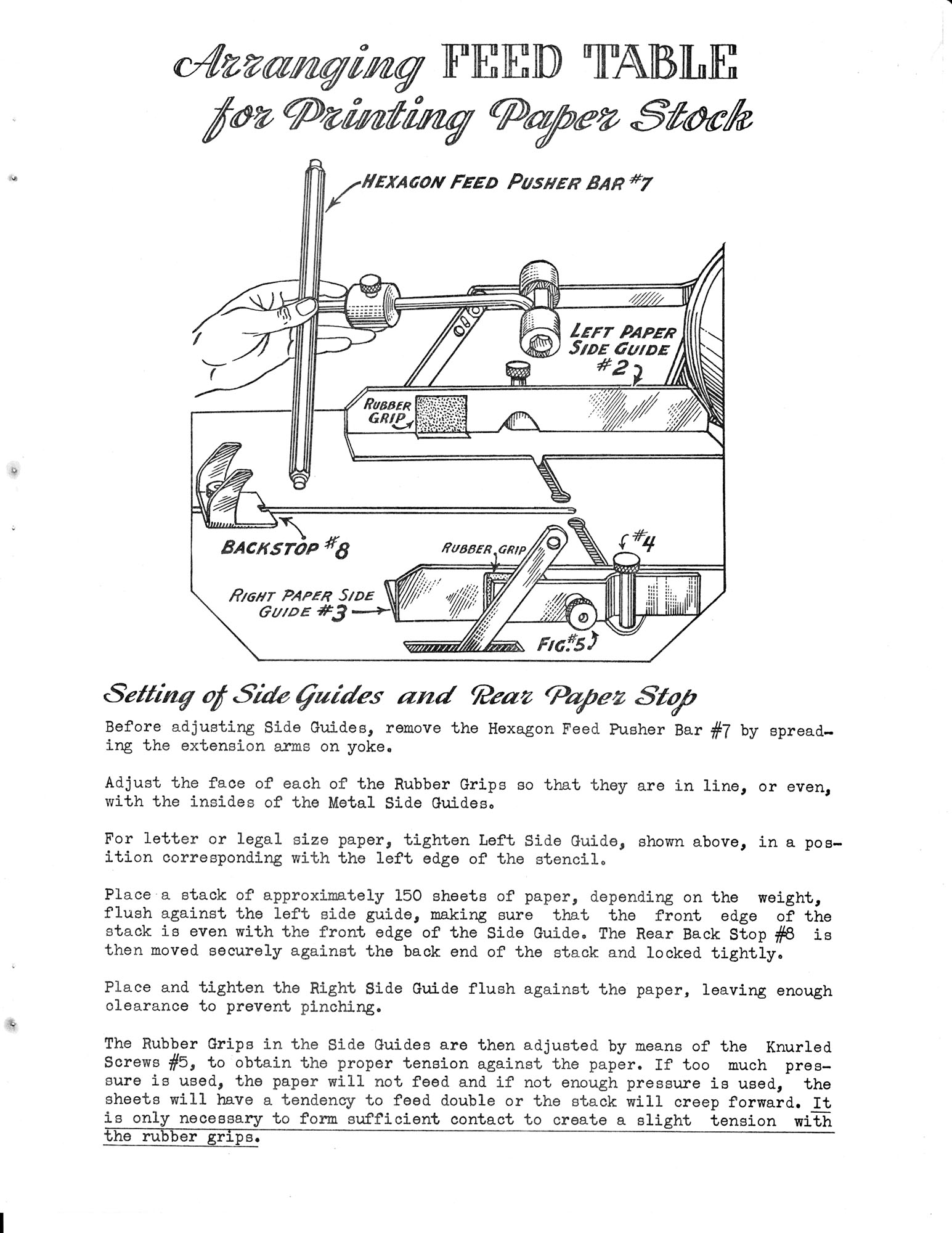
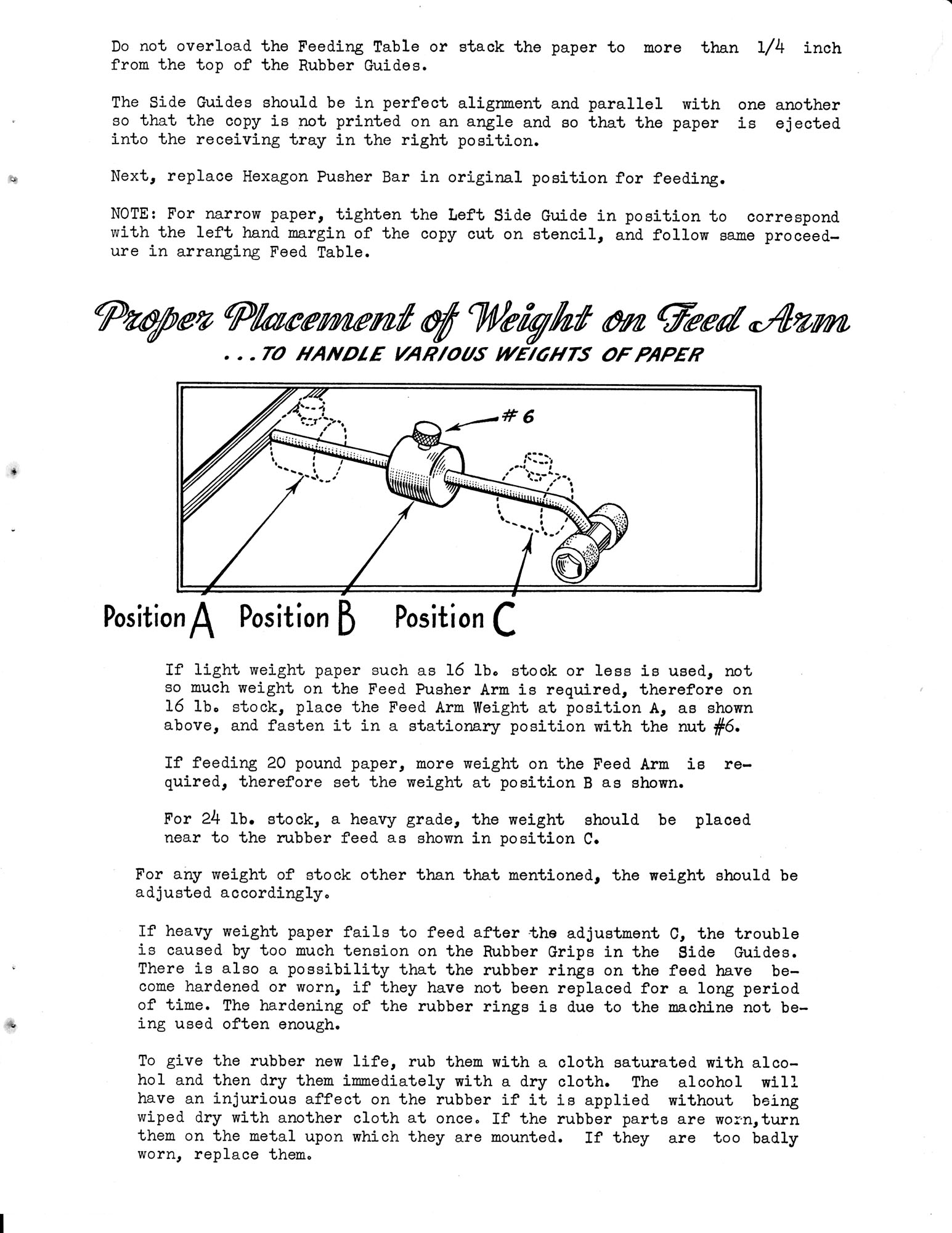
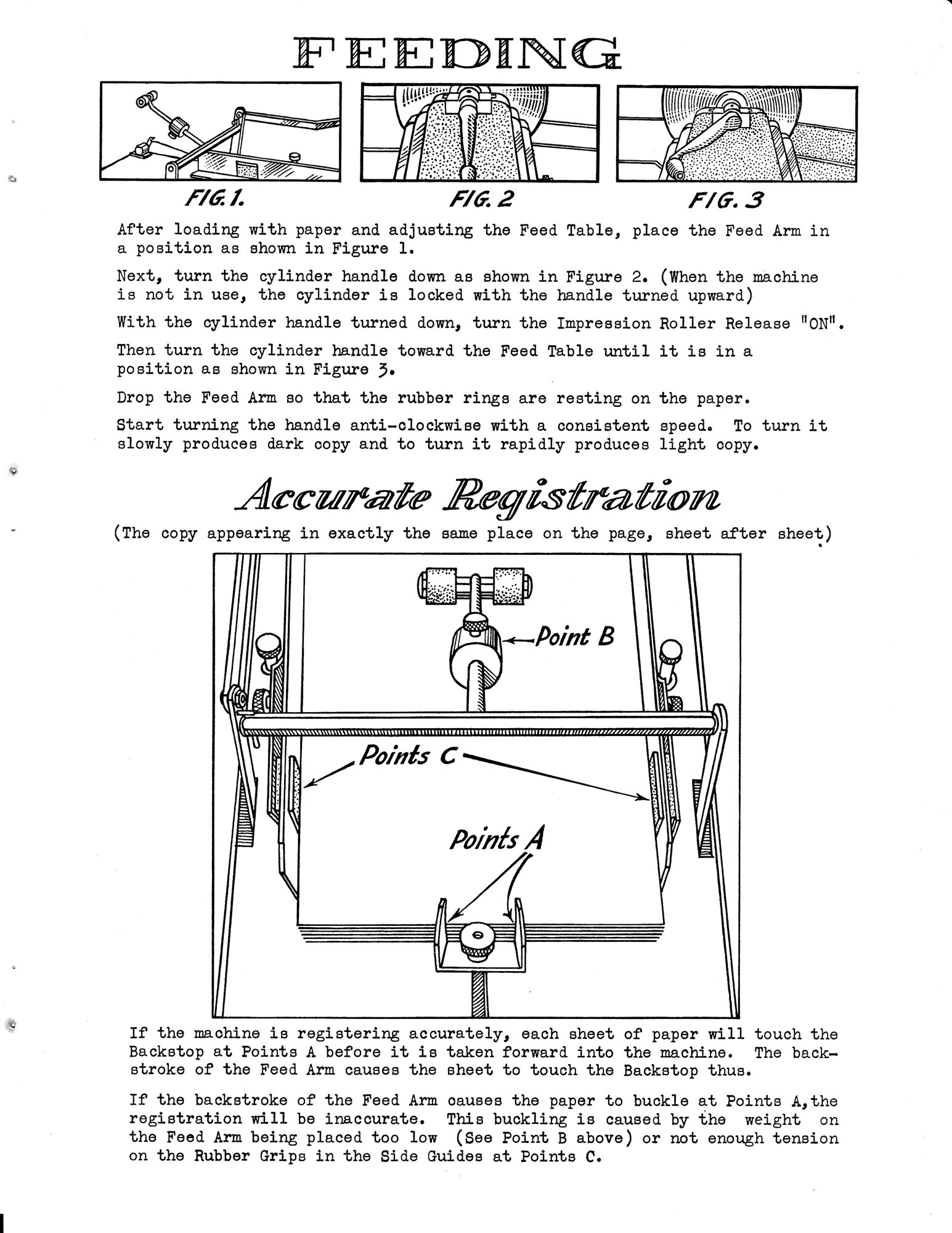
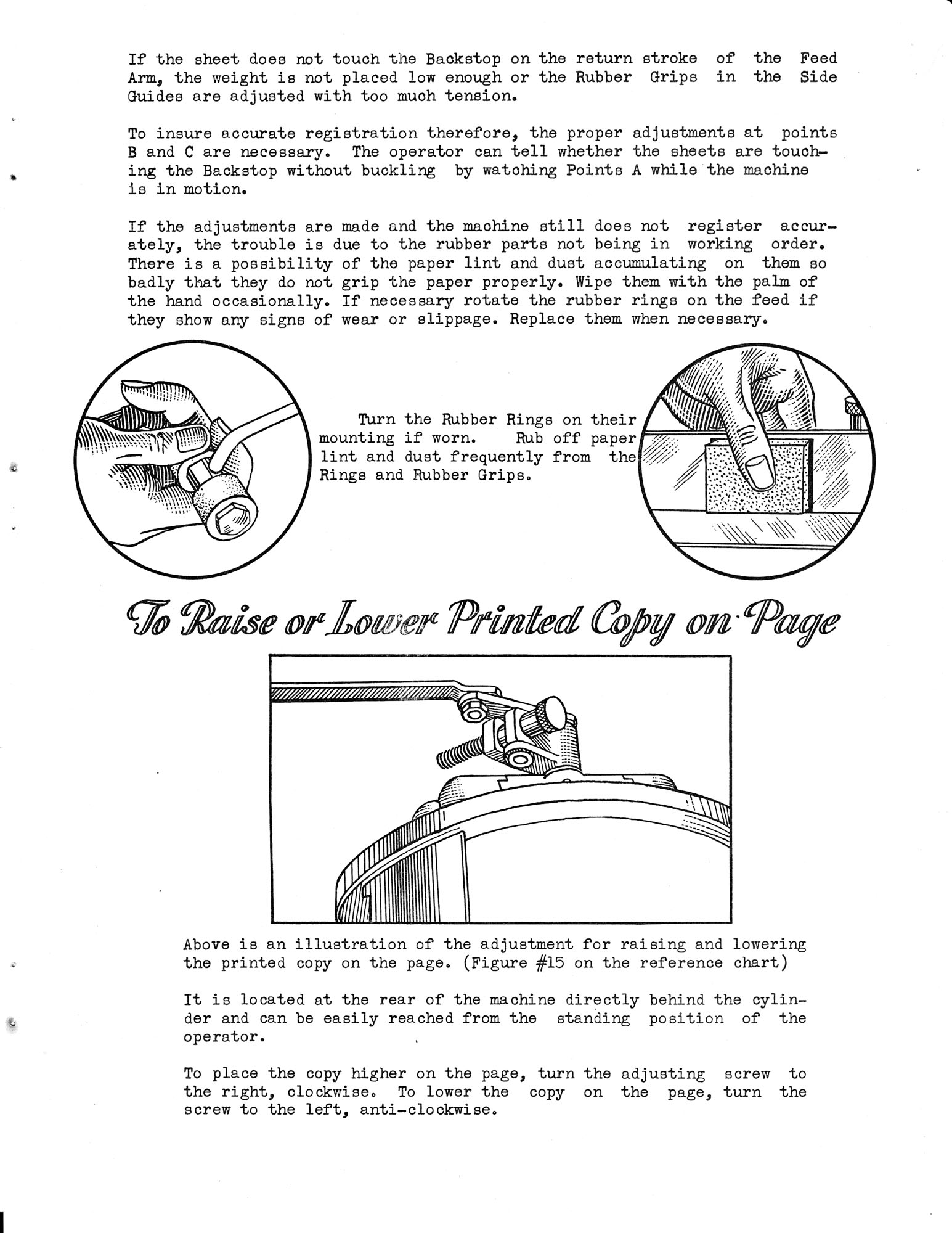
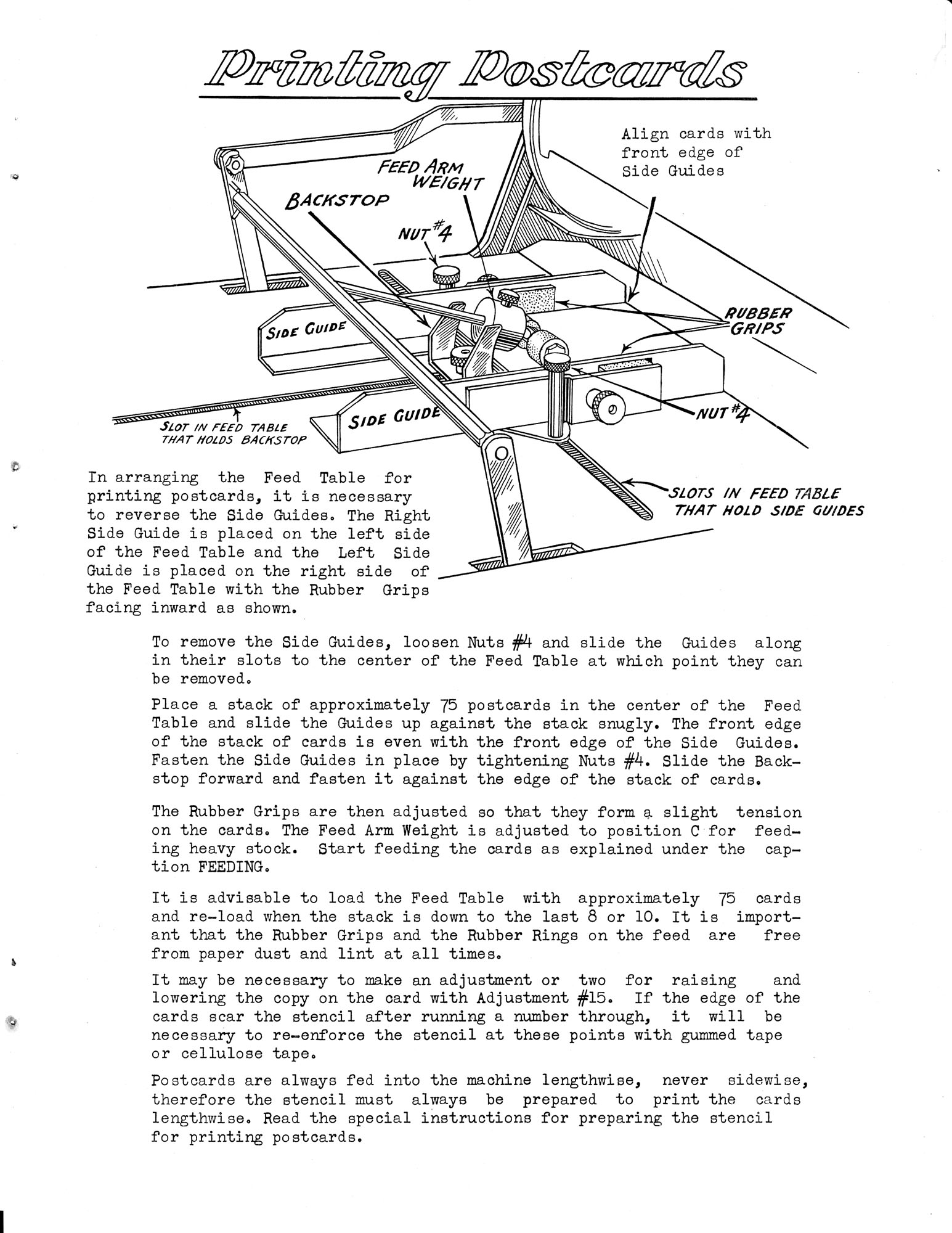
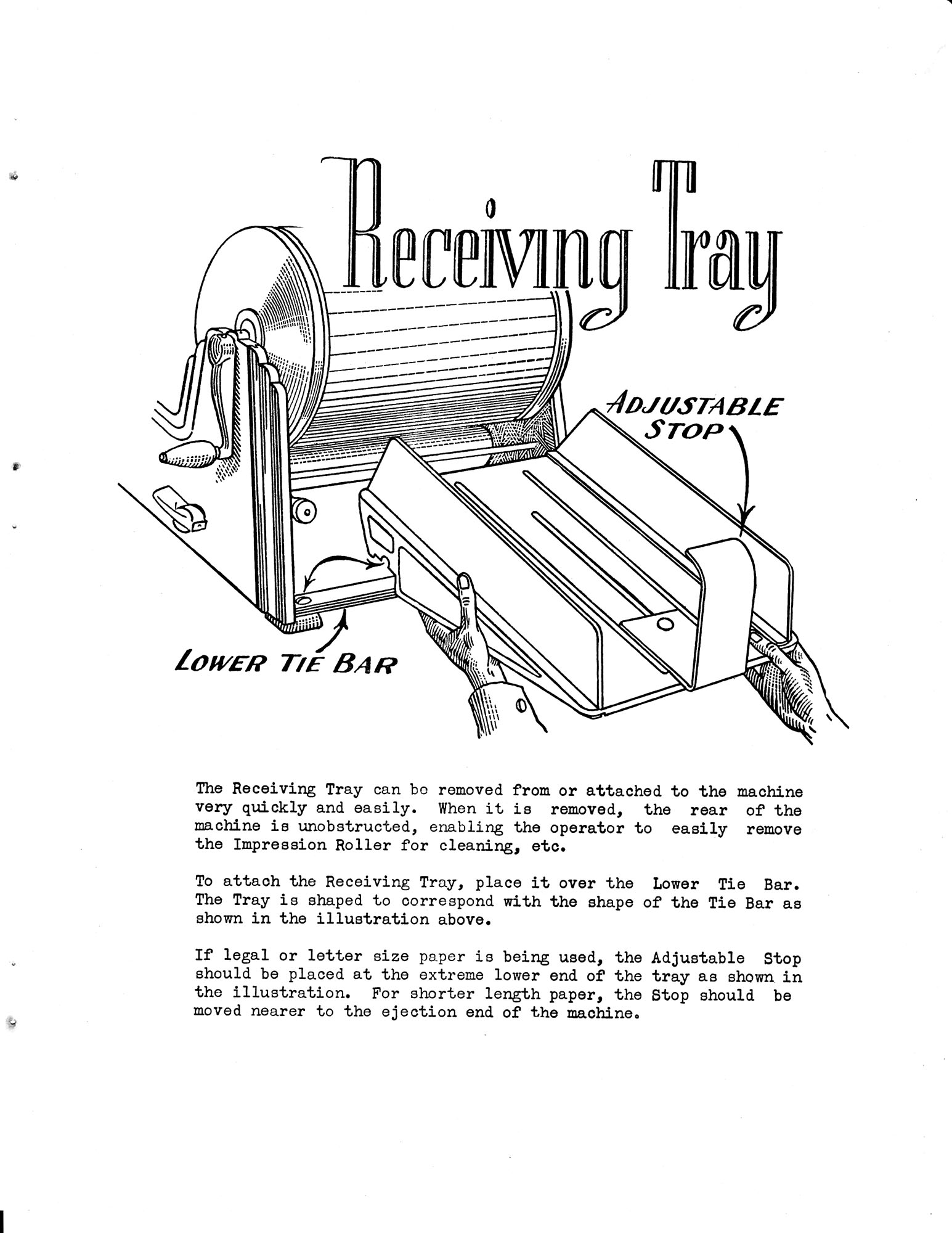
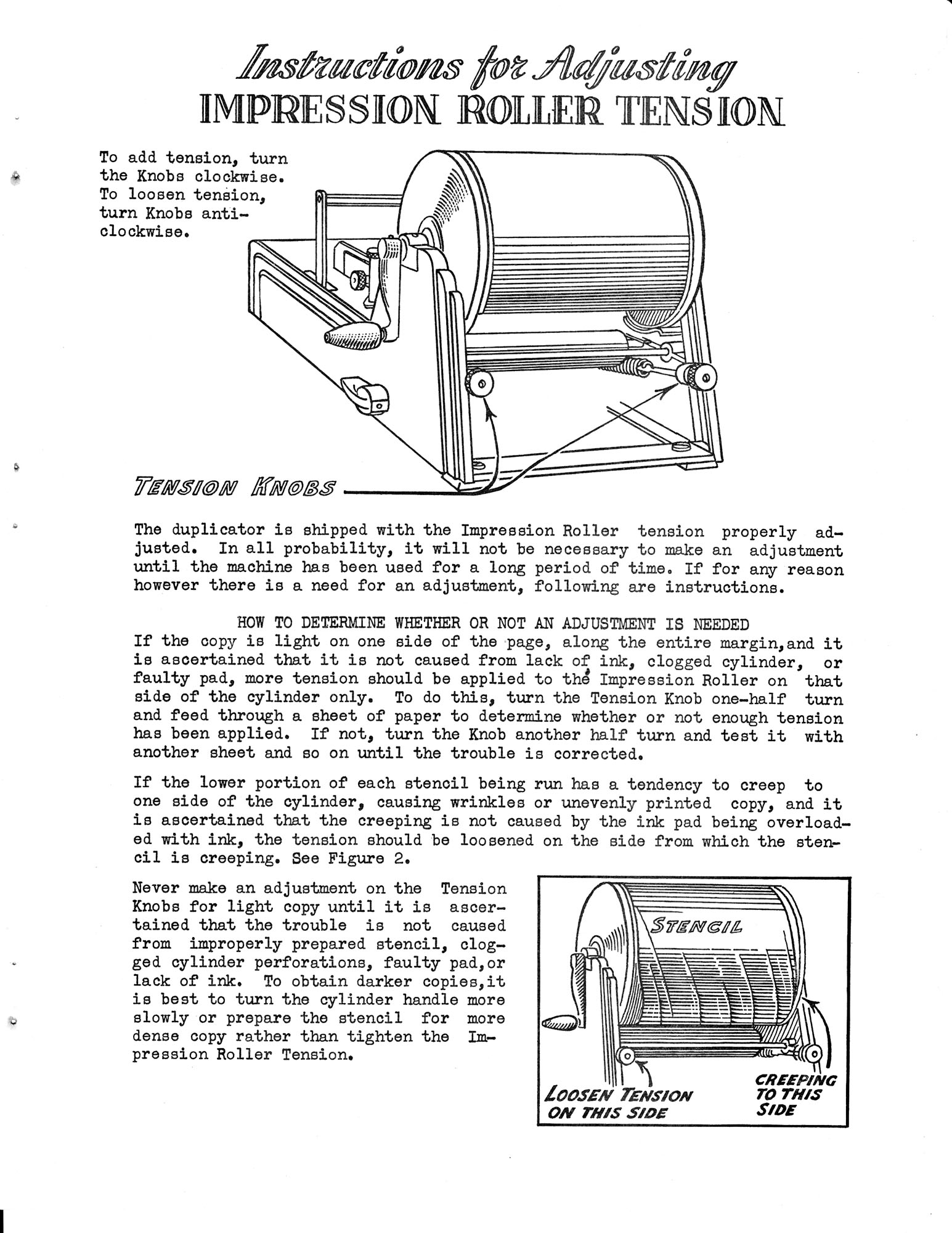
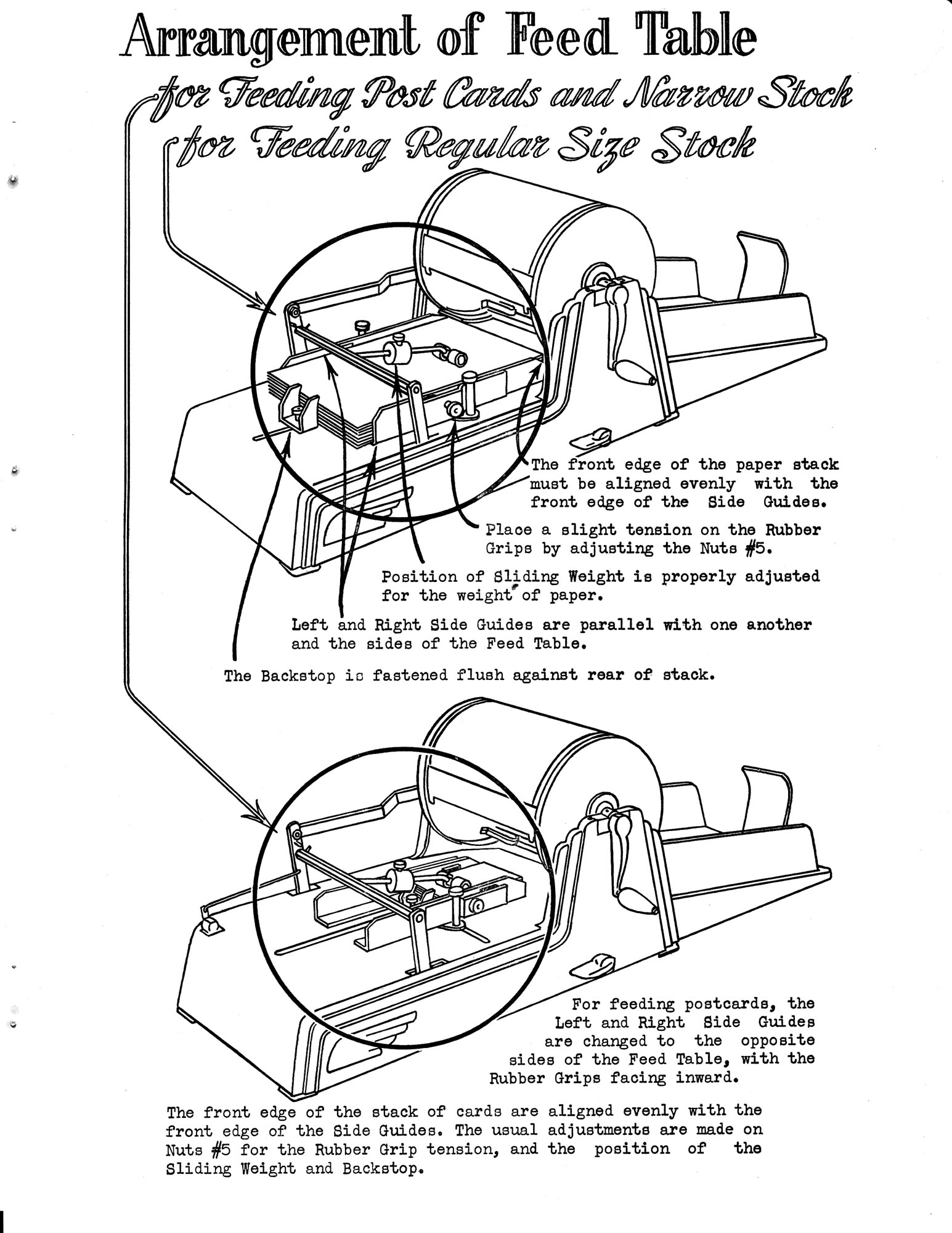
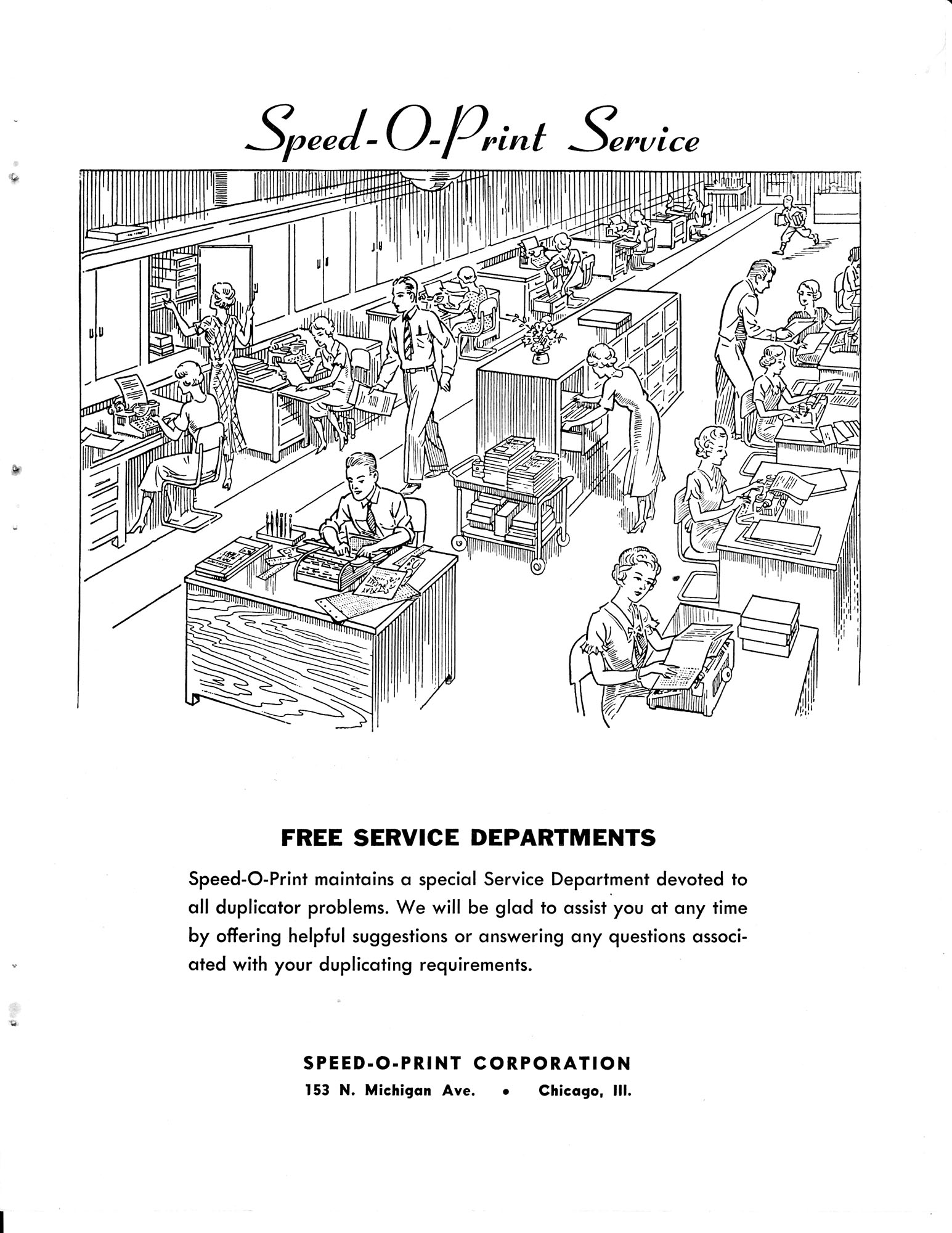
That pen work is more reminiscent of the early 1930s than the 1950s (as is the clothing in the final illustration), although the use of Futura on the last page does point to a later publication date. Maybe this was a late printing of a manual that had originally been prepared decades earlier.
Thanks for the reference to Peter Aschwanden. I’d forgotten his name, but I’ll never forget his illustrations.
Heh, I guessed conservatively. The quality of the paper its printed on and print style would indicate that 30’s isn’t a bad guess.
Wow, that really is some great illustration! It shows verve, panache, fun … much more than the typical, boring though accurate technical drawings.
I was not aware of Aschwanden, but I can definitely see the connection after checking out some of his work online. I think some underground cartoonists and countercultural artists of the ’60s deliberately imitated the prewar aesthetic they remembered from their youth. The ’60s are an interesting time in technological history—there was a moment there, with things like the VW book and “Zen and the Art of Motorcycle Maintenance,” when it seemed like Man and Machine and Nature could coexist with Love.
Yeh, I’ve got a strong connection to that philosophy – born in ’66 and spent the 80’s keeping a succession of Volkswagens alive that were right around the same age as me at the time. The concept resonates :D
Maybe you’ll have to join https://www.facebook.com/Mimeograph-Users-Group-233093480037963/
ok, posted it over there. Probably a good reason for me to scan the rest in – it looks like there’s at least a few people who collect the things and get ’em running. (:
Oh my, I had no idea there’re still mimeograph users out there. Of necessity my mother became an expert in mimeography and still used it in church work through the late 80s.
It’s a great reproduction of the manual, with wonderful period artwork. At the risk of being pedantic, in your introduction you refer to a “spirit duplicator”. This is rather a stencil duplicator, A.K.A. mimeograph. A spirit duplicator uses a reverse carbon master and alcohol on the copy paper.
heh, tells you what I know about these machines, despite about 10 years running offset printing presses back before digital imaging. I have a bunch of these mimeo and spirit duplicator user/parts and service manuals, and have scanned them all. Working on putting them all up on some web pages.
here’s a taste: http://munk.org/projects/duplicators/copy-rite-1968-pricelist.php
Beautiful illustrations. I have always been curious about these machines. I wouldn’t turn down a mimeograph if one wandered into my life.